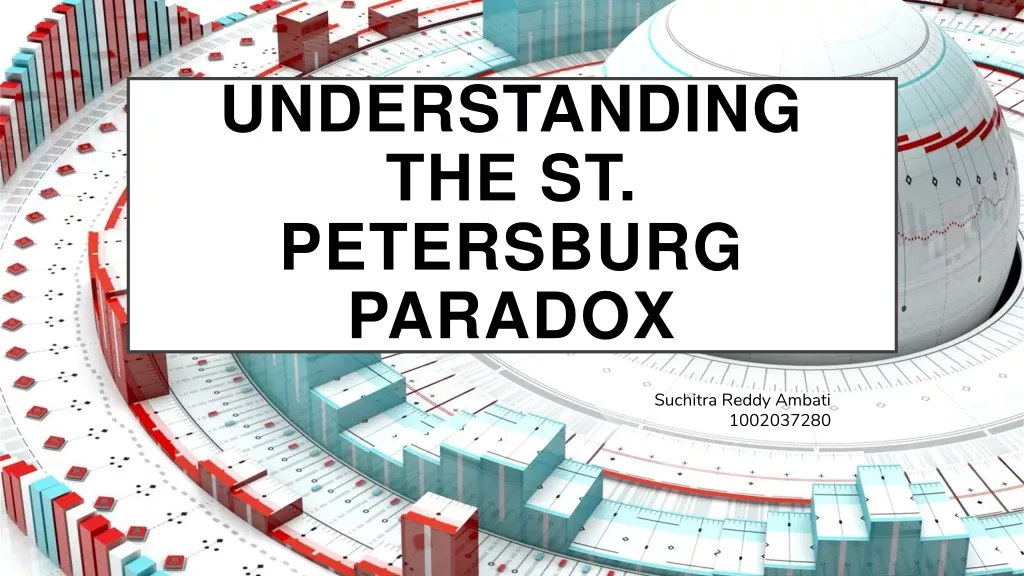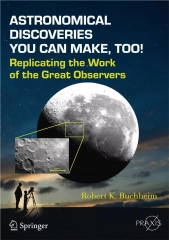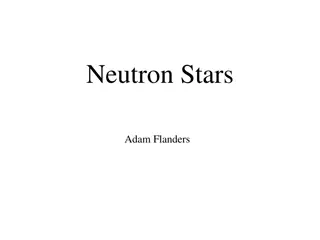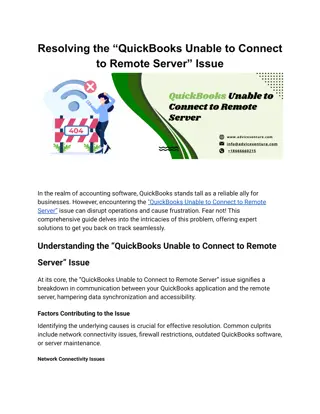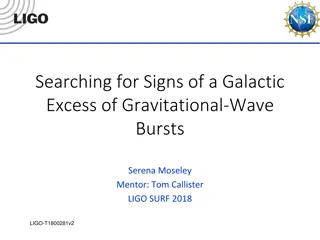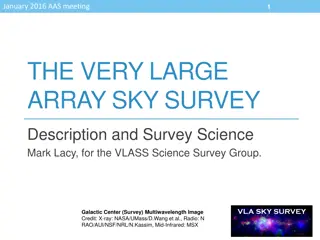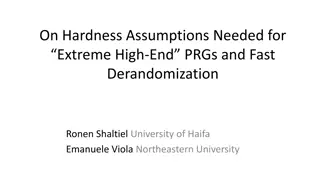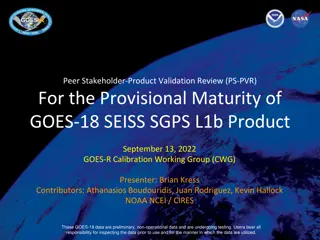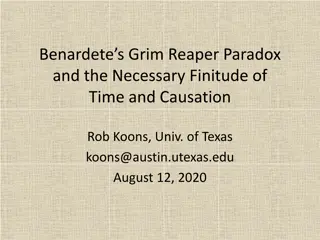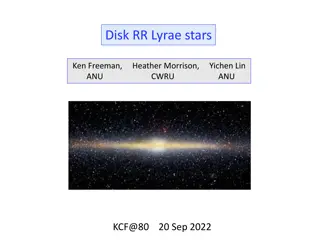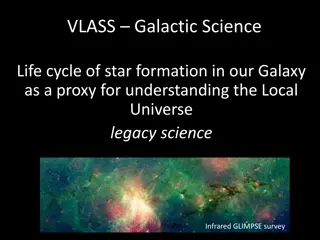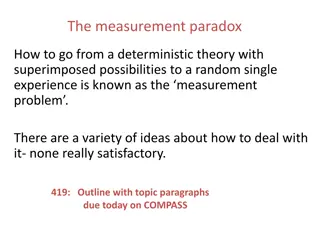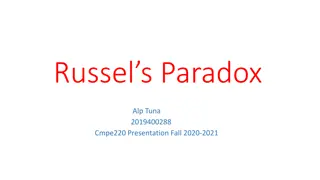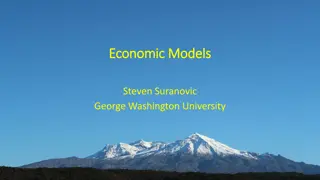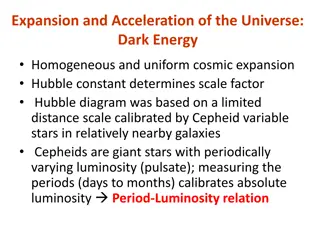Resolving Olbers Paradox: Galactic Discoveries & Contrary Assumptions
Olbers Paradox, an astronomical puzzle, can be tackled by scrutinizing underlying assumptions. Explore the intriguing counter arguments presented by students along with insights from galactic rotation, differential velocities, and the HI 21cm map of the Milky Way. Delve into topics such as stellar distributions, extinction effects, and Oort's constants to shed light on the enigmatic dark sky paradox.
Download Presentation

Please find below an Image/Link to download the presentation.
The content on the website is provided AS IS for your information and personal use only. It may not be sold, licensed, or shared on other websites without obtaining consent from the author.If you encounter any issues during the download, it is possible that the publisher has removed the file from their server.
You are allowed to download the files provided on this website for personal or commercial use, subject to the condition that they are used lawfully. All files are the property of their respective owners.
The content on the website is provided AS IS for your information and personal use only. It may not be sold, licensed, or shared on other websites without obtaining consent from the author.
E N D
Presentation Transcript
Number counts and Olbers paradox The dark night sky paradox (Heinrich W Olbers [1758-1840]) May be resolved by testing the assumptions underlying the above derivation. Students to propose counter arguments in next class.
Number counts and Olbers paradox The dark night sky paradox (Heinrich W Olbers [1758-1840]) When restricted to the Milky Way, the counter arguments are: 1. The MW is finite 2. The stars are not uniformly distributed throughout space (stellar density drops off steeply with increasing galactic latitude) 3. Extinction along many lines of sight (significant along the disk which contains the bulk of the stellar population) All these effects add up to few twinkling stars and plenty of dark patches in the 2 pi steradians of the night sky
Galactic Rotation Differential rotation Sec 2.3 Measured angular speed of stars in the solar neighborhood decreases with galacto-centric radius w =V R Observed in 1900 s and explained in 1927 by Jan Oort Solar motion measured with respect to Local Standard of Rest (LSR) See Carroll & Ostlie, pp 900-908
HI 21cm map of galactic disk Sec 2.3 Measured gas velocities match the predicted distribution of Vr from Oort s analysis
Measuring differential rotation Sec 2.3 Derivation of Oort s constant, A Radial velocity of star at P: Vr= R0sin(l)V R-V0 R0 See next slide for Vr measurements from HI 21cm line Vr For d << R, use tilde math to obtain: R0 ' Vr= dsin(2l) -R V R dsin(2l)AOort 2 Aoort from observations: 14.8+/-0.8 km.s-1.kpc-1
Measuring differential rotation Sec 2.3 Derivation of Oort s constant, B Tangential velocity of star at P: Vt Vt= R0cos(l)V R-V0 -Vd R0 R For d << R, and (R0 R) ~ d cos(l), use tilde math to obtain: R0 ' 1 R Vt= dcos(2l) -R V R -d ( ) ' RV 2 2 R0 Vt d AOortcos(2l)+BOort [ ] Boort from observations: -12.4+/-0.6 km.s-1.kpc-1 Mathematically more elegant form given in Carroll & Ostlie, pp. 908 - 913
Tangent point method Measuring V from radial velocities Vr= R0sin(l)V R-V0 R0 (i) V/R increases with decreasing R (consider first or fourth quadrants) (ii) V/R is a maximum at the tangent point, T Vr R= R0sin(l) V =Vr+V0sin(l) Using HI 21cm line, map Vr and thus V along the plane of the disk for various galactic longitudes, l
Rotation curve of the MW Sec 2.3.1 Effect of bar HI gas, SGP, l < 90 R > Rsun, V from stellar emission lines HI gas, NGP, l > 270 Observed rotation curve of MW is flat May even show an increase at R > Rsun M(< R)~RV2 Mass enclosed within a radius, R G Flat or rising rotation curve for MW indicates increasing M(R), though stellar and gas density are decreasing unseen mass = Dark Matter
Motion under gravity Galactic Dynamics Ch 3. Topics to be covered Newton s law of gravity Gravitational potentials Stellar orbital dynamics Virial theorem Escape velocity Free fall and dynamical times Two body relaxation Epicycles Collisionless Boltzmann equation Galactic Dynamics Binney, J., & Tremaine, S. (1987) Princeton University Press.


